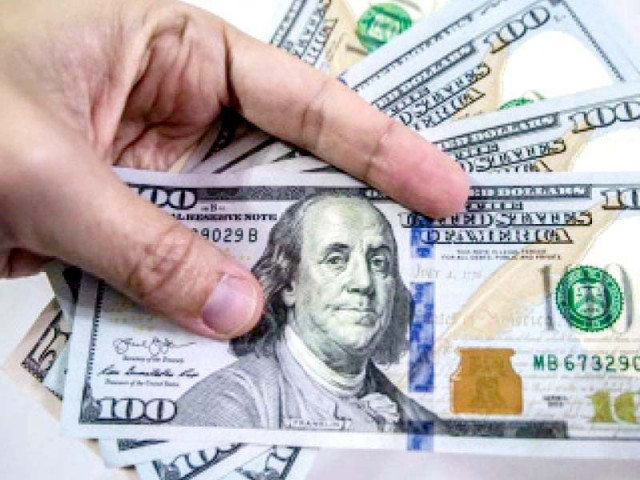Govt gets $33b in foreign loans
Think tank warns borrowing will keep economy in state of low growth

The government has so far obtained $33 billion in gross foreign loans to service debt and support economic growth, as a think tank warns that unsustainable borrowing will keep economy in a state of low growth and close to default.
The $33 billion in gross foreign loans from July 2018 through March 2021 were equal to 78% of the external borrowing made by the previous Pakistan Muslim League-Nawaz (PML-N) government during its five-year tenure.
The Institute of Policy Reforms has analysed the foreign borrowing trends of the last 20 years till fiscal year 2019-20. The Express Tribune has expanded the foreign borrowing data till March 2021 aimed at fully covering the current government’s tenure.
The Pakistan Tehreek-e-Insaf (PTI) government took $32.9 billion in foreign loans as of March this year, including Eurobonds, and $25 billion or 76% of these loans had been taken for budget and balance of payments support.
The central bank’s data showed that the government added about $15 billion to the external public debt, which meant rest of the loans were used to repay the maturing loans.
The PTI government took $10.3 billion in foreign loans in the past nine months, including through Eurobonds.
Similarly, the PML-N government had taken foreign loans of $42.4 billion in five years including $27 billion or 64% for budget support, according to the IPR. The last government had returned around $24 billion worth of foreign loans in five years.
Both the PTI and PML-N resorted to heavy foreign borrowing due to their failure to attract sufficient non-debt creating inflows. The result was that both the PTI and PML-N governments took pride in taking foreign loans to avoid looming default.
Pakistan must end its preference for accessing any available foreign fund regardless of interest cost and the country must take a deep look at its public fiscal management, stated the IPR in its report titled “Foreign Aid and Purpose - Pakistan Must Slowdown External borrowing”.
Headed by PTI’s Humayun Akhtar Khan, the IPR report underlined that the most critical problem faced by Pakistan’s economy was repayment and servicing of external debt.
Despite paying back large sums, the stock of debt has risen greatly, even as net transfer to Pakistan is a small proportion of the total disbursed amount, said the IPR.
Foreign debt becomes a burden when it is used for balance of payments support. In the last two years, loans for budget and balance of payments support have reached unsustainable levels, according to the IPR.
The IPR said that the myth that borrowing created growth was misplaced, as in Pakistan’s case, borrowing created the need for more borrowing with an external account crisis waiting to happen.
The “economy would stay in its present state of low growth, low exports, and close to default” because of high external borrowing that eats a majority of government revenues and leaves very little for economic development and productive spending.
In the last 10 years, the external debt servicing (principal and interest) ranged from 1% of GDP in 2014 to almost 5% of GDP in FY20.
In the last fiscal year, the principal and interest paid to foreign creditors stood at a whopping Rs2.3 trillion, which was almost twice the amount spent on development by the federal and provincial governments.
The report stated that the government believes that foreign credit promotes economic development and welfare and leads to sustainable social and economic growth but Pakistan’s case shows no relationship between foreign credit and growth.
Despite high levels of foreign borrowing, Pakistan’s GDP growth rates have been consistently moderate to low and uneven as debt servicing pre-empted ever more resources, the economy’s growth potential declined, said the IPR.
The report has challenged another official myth that foreign aid in large part is concessional and by investing in public development projects it brings long-term economic benefits for the economy and creates the ability to repay them. It showed that interest payments were in the range of one-third to 43% of the external debt servicing to the International Monetary Fund (IMF), World Bank, Asian Development Bank (ADB) and other creditors.
The report also criticises the role of World Bank and ADB and said that these institutions were not helpful to the economy.
About 20 years ago, the multilateral lenders made a shift to programme lending, which further fuelled governments’ spending beyond means, according to the IPR.
“IFIs have been unhelpful with their advice too,” said the IPR. It said that the creditors face no consequence for their weak programme design and inability to learn from mistakes. In designing their loans, they have consistently disregarded Pakistan’s weak governance and the low capacity of the economy.
The government must develop home grown policies rather than donor driven ones and must have guidelines for use of foreign loans, so that they are used mostly for public projects that boosts private sector productivity and export growth, advised the IPR. It has also urged to increase domestic savings rates that remain low around 15% of GDP.
Published in The Express Tribune, April 21st, 2021.
Like Business on Facebook, follow @TribuneBiz on Twitter to stay informed and join in the conversation.


















COMMENTS
Comments are moderated and generally will be posted if they are on-topic and not abusive.
For more information, please see our Comments FAQ